World Music Day is celebrated on June 21st. Music is a powerful tool for fostering inclusivity and cultural appreciation in early childhood education. It introduces children to diverse sounds, rhythms, and traditions from around the world, helping them develop empathy and a broader understanding of different cultures.
Celebrating World Music With Young Learners
Here are some engaging ways to celebrate world music with young learners:
- Cultural Music Exploration: Introduce children to songs from various countries, showcasing different languages and musical styles.
- Instrument Discovery: Let children explore traditional instruments from different cultures, like African drums, Indian sitars, or Latin American maracas.
- Dance and Movement: Encourage children to move to the rhythms of global music, helping them connect with different cultural expressions.
- Storytelling Through Song: Use folk songs and lullabies from different cultures to share stories and traditions.
- Music-Making Together: Create opportunities for collaborative music-making, fostering teamwork and social skills.
- Musical Instruments Coloring Pages—Musical Instruments Colouring Pages offer a joyful blend of creativity and early childhood education, allowing children to explore the world of music through visual expression. As children colour in instruments, they develop fine motor skills and visual recognition, while naturally engaging in conversations about sound, melody, and movement. This fusion of art and music can also support emotional expression, especially for children who respond more readily to creative outlets.
- Musical Instruments Shadow Match—Musical instrument shadow matching is a delightful activity that blends visual discrimination with musical exploration, perfect for engaging young learners. Children are presented with outlines or "shadows" of various instruments—like tambourines, maracas, or xylophones—and must match them to their corresponding images. This encourages attention to detail, strengthens cognitive skills such as shape recognition, and fosters vocabulary development as they learn the names and sounds of each instrument.
- Counting Guitar Strings—Counting Guitar Strings is a playful and educational tool that supports early numeracy skills by encouraging children to connect quantities with their corresponding numbers. As they engage with these activities, children build one-to-one correspondence, improve visual scanning, and strengthen number recognition
How Does World Music Contribute To Child Development?
World music plays a vital role in early childhood development, enriching cognitive, emotional, social, and physical growth. Here’s how:
- Cognitive Development: Exposure to diverse musical patterns enhances memory, problem-solving skills, and spatial reasoning.
- Emotional Growth: Music helps children express emotions, regulate moods, and develop empathy.
- Social Skills: Participating in group music activities fosters cooperation, communication, and cultural awareness.
- Physical Coordination: Dancing and playing instruments improve fine and gross motor skills, hand-eye coordination, and overall physical control.
What Activities Can I Do With Children Using World Music?
There are so many engaging ways to introduce children to world music! Here are some fun activities to explore:
- Musical Scavenger Hunt: Play snippets of songs from different cultures and have children match them to their country of origin.
- Drum Circle: Let children experiment with percussion instruments from around the world, creating their own rhythms.
- Sing-Along Sessions: Teach simple songs in different languages, helping children appreciate diverse musical traditions.
- Dance Around the World: Play music from various cultures and encourage children to move to the rhythms.
- Instrument Exploration: Introduce traditional instruments like maracas, sitars, or African drums, letting children try them out.
- Storytelling Through Music: Use folk songs to share cultural stories and traditions.
- Musical Memory Game: Match instruments to their country of origin in a fun, interactive way.
What Are Some Specific World Music Genres To Explore?
Exploring world music genres can be a fascinating journey! Here are some diverse styles to consider:
- Afrobeats: A modern fusion of African rhythms with electronic and pop influences.
- Carnatic & Hindustani Music: Classical Indian music traditions with deep cultural roots.
- Flamenco: A passionate Spanish genre featuring guitar, singing, and dance.
- Reggae: Originating from Jamaica, known for its laid-back rhythms and socially conscious lyrics.
- Samba & Bossa Nova: Brazilian styles blending lively percussion and smooth melodies.
- K-Pop & J-Pop: Contemporary Korean and Japanese pop music with global appeal.
- Fado: A soulful Portuguese genre expressing themes of longing and nostalgia.
- Tango: A dramatic and expressive dance music style from Argentina.
- Gamelan: Traditional Indonesian ensemble music featuring percussion instruments.
- Celtic Folk: Music from Ireland and Scotland, often featuring fiddles and bagpipes.
Music Activities For Toddlers
Toddlers love engaging with music, and world music can be a fantastic way to introduce them to different cultures while supporting their development. Here are some fun and interactive activities:
- Global Dance Party: Play music from different cultures and encourage toddlers to move freely to the rhythms.
- Simple Instrument Exploration: Let them shake maracas, tap tambourines, or play small drums inspired by world music traditions.
- Sing-Along Sessions: Teach simple songs from different languages with easy-to-follow melodies.
- Musical Storytime: Pair folk songs with storytelling to introduce cultural traditions.
- Rhythm Play: Use clapping, stomping, or tapping to explore beats from different musical styles.
- Sensory Music Play: Combine music with scarves, ribbons, or textured materials for a multi-sensory experience.
Linking Music to the EYLF
Music aligns beautifully with the Early Years Learning Framework (EYLF), supporting children's development across multiple learning outcomes. Here’s how:
- Outcome 1: Identity – Music helps children develop a strong sense of self through familiar songs, cultural tunes, and group participation.
- Outcome 2: Community – Exploring diverse musical traditions fosters respect for different cultures and strengthens social connections.
- Outcome 3: Wellbeing – Movement and rhythm activities enhance physical coordination, emotional regulation, and self-expression.
- Outcome 4: Learning – Music encourages creativity, problem-solving, and cognitive skills through patterns, repetition, and storytelling.
- Outcome 5: Communication – Singing, dancing, and playing instruments support language development, listening skills, and collaborative expression.
Further Reading
Benefits Of Music and Movement
Using Music, Rhythm, and Movement To Enhance Children's Self-Regulation
Music Activities For Toddlers and Preschoolers
30 Movement and Dance Activities For Preschoolers
How Music Enriches Brain Development In Children


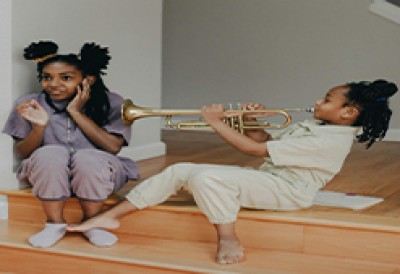
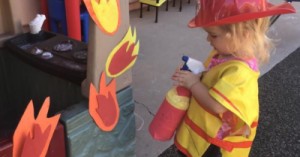
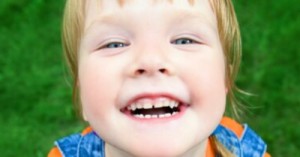
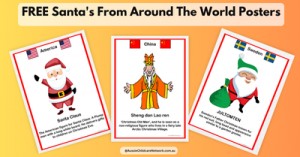

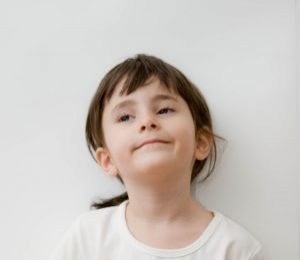 Open ended questions cannot be responded to with one word answers such as yes or no. These types of questions enables a child to provide
Open ended questions cannot be responded to with one word answers such as yes or no. These types of questions enables a child to provide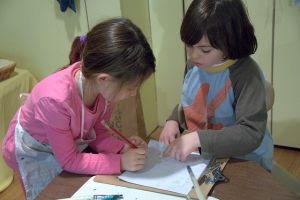 During your child’s preschool years, an important milestone begins to emerge. This is the development of pre-writing skills. Pre-writing skills are used to encourage, develop
During your child’s preschool years, an important milestone begins to emerge. This is the development of pre-writing skills. Pre-writing skills are used to encourage, develop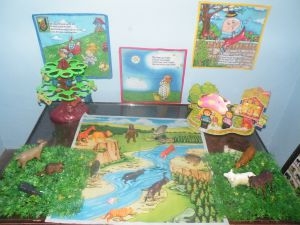 Open ended materials enables children to play freely. They are objects that have no rules to follow, use or function. Raw materials that can be
Open ended materials enables children to play freely. They are objects that have no rules to follow, use or function. Raw materials that can be An Acknowledgment of the Country is a way of showing respect for the Traditional Owners and can be given by both non-Indigenous people and Aboriginal
An Acknowledgment of the Country is a way of showing respect for the Traditional Owners and can be given by both non-Indigenous people and Aboriginal Language plays an important role in a child’s development. It enables a child to communicate effectively with their family, learn at school, socialize with friends,
Language plays an important role in a child’s development. It enables a child to communicate effectively with their family, learn at school, socialize with friends, Like adults, children have to deal with their own stress in life. Moving house, starting a new school, preparing for a new sibling - these are
Like adults, children have to deal with their own stress in life. Moving house, starting a new school, preparing for a new sibling - these are Playdough is such a versatile material. It provides numerous benefits to children as they manipulate it, it is safe and soothing and provides children with
Playdough is such a versatile material. It provides numerous benefits to children as they manipulate it, it is safe and soothing and provides children with Teaching children about sustainability enables them to appreciate and respect the natural environment. Early childhood services can provide meaningful hand on learning experiences in order
Teaching children about sustainability enables them to appreciate and respect the natural environment. Early childhood services can provide meaningful hand on learning experiences in order Recycling is an important concept that teaches children to care for the environment. It encourages children to be responsible and show a growing appreciating for
Recycling is an important concept that teaches children to care for the environment. It encourages children to be responsible and show a growing appreciating for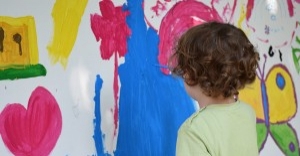 When children apply paint to paper, glue things together, or pound a lump of clay, they experiment with colour, shape design and texture.
When children apply paint to paper, glue things together, or pound a lump of clay, they experiment with colour, shape design and texture.



